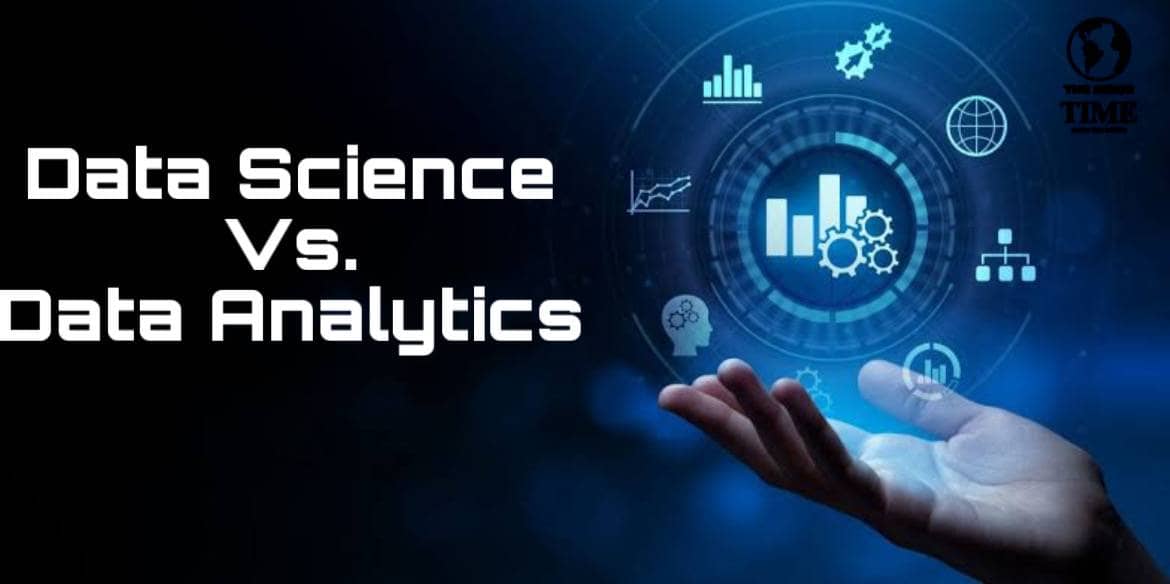Data science and data analytics both address Big Data but with distinct methodologies. Data science serves as a comprehensive category that encompasses data analytics.
- What is Data Science?
- What is Data Analytics?
- What is the Difference?
Summary:
These are the popular words of the year. For people looking for long-term career prospects, Big Data and data science jobs have long been a safe bet. As AI and machine learning increasingly permeate our daily lives and economy, it is foreseeable that this trajectory will persist. Data has emerged as the invaluable resource akin to oil for businesses, enabling them to gather vital insights and enhance operational efficiency, thus fostering growth within the market. But who will glean the insights? Who will process all the collected raw data? All tasks are performed either by a data analyst or a data scientist.
Introduction:
These are two of the most popular job roles in this field as companies around the world try to make the most of data. Data Science and Data Analytics are a mishmash of terms that intersect and overlap with each other but are still quite different.
Data science and data analytics both address Big Data but with distinct methodologies. Data science serves as a comprehensive category that encompasses data analytics. Data Science is a combination of many disciplines – Mathematics, Statistics, Computer Science, Informatics, Machine Learning and Artificial Intelligence. It includes concepts such as data mining, data inference, predictive modeling, and ML algorithm development to extract patterns from complex datasets and transform them into actionable business strategies. On the other hand, Data Analytics mainly deals with statistics, mathematics and statistical analysis.
While data science focuses on finding meaningful correlations between large datasets, data analytics is designed to uncover the nuances of the insights extracted. Put differently, Data Analytics can be considered a subset of data science, concentrating on providing precise responses to inquiries raised within the field. Meanwhile, data science endeavors to uncover novel and distinctive queries capable of propelling business innovation. In contrast, the purpose of data analysis is to find solutions to these questions and determine how they can be applied within an organization to promote data-driven innovation.
Data scientists and data analysts use data in different ways. Data scientists use a combination of mathematical, statistical, and machine learning techniques to clean, process, and interpret data. They design advanced data modeling processes using prototyping, ML algorithms, predictive models, and custom analytics.
Also Read This Article : 15 Important Tools Used For Data Science.
While data analysts examine data sets to identify trends and draw conclusions, data analysts collect large amounts of data, organize it, and analyze it to identify relevant patterns. Once the analysis is done, they try to present their findings through data visualization methods like charts, graphs, etc. Thus, data analysts transform complex insights into business-savvy language that both technical and non-technical members of an organization can understand. ,
Responsibilities of Data Scientists:
To process, clean, and validate the integrity of the data.
Conducting exploratory data analysis on extensive datasets.
Performing data mining by creating ETL pipelines.
Performing statistical analysis using ML algorithms like Logistic Regression, KNN, Random Forest, Decision Tree, etc.
Writing code for automation and creating resourceful ML libraries.
To gain business insights using ML tools and algorithms.
Identifying new trends in data to make business predictions.
Responsibilities of Data Analysts
To collect and interpret data.
To identify relevant patterns in the dataset.
To query data using SQL.
Experimenting with different analytical tools like Predictive Analytics, Prescriptive Analytics, Descriptive Analytics and Diagnostic Analytics.
Employing data visualization tools such as Tableau, IBM Cognos Analytics, and others. to present the extracted information.
Conclusion
Has created Data Analytics and Data Science courses with the help of industry professionals to guide aspiring professionals to build lucrative careers in the world of data. To understand the difference between Data Analytics and Data Science courses more effectively, we suggest that individuals consider some important dimensions such as the tools and techniques that can be mastered in each of these courses. Having strong practical knowledge and expertise of various analytical and database tools is the secret success mantra to excel in the data science and analytics industry.
Data Analytics course provides comprehensive training on tools like Excel and SQL to manipulate and analyze large amounts of data. In addition to learning Excel, SQL and Python, the data analytics course also includes modules on how to use Power BI and Tableau to create dashboards and visualizations to communicate analysis results. Anyone with minimal or no coding background can learn Analytics.




One Comment on “What are the Differences Between Data Science vs Data Analytics?”